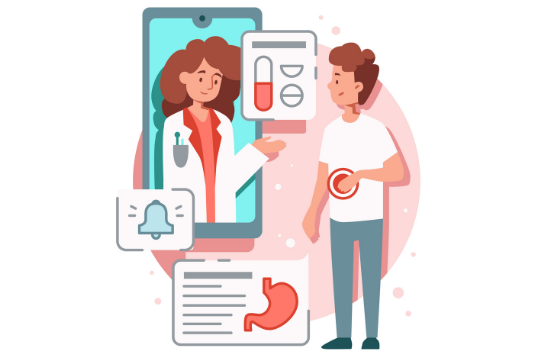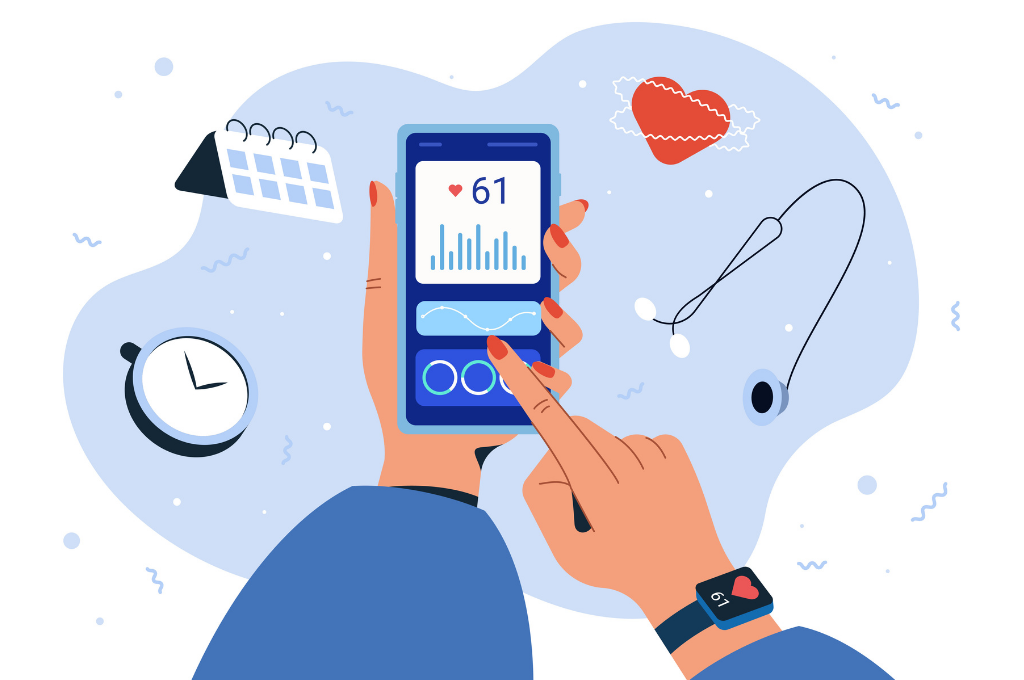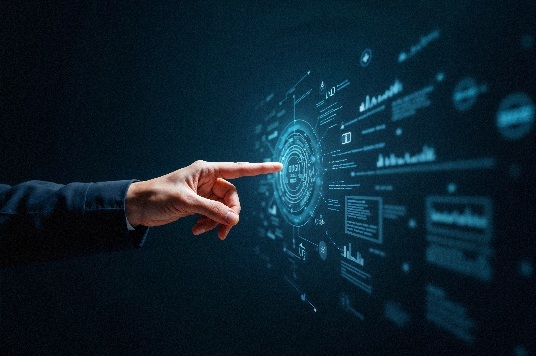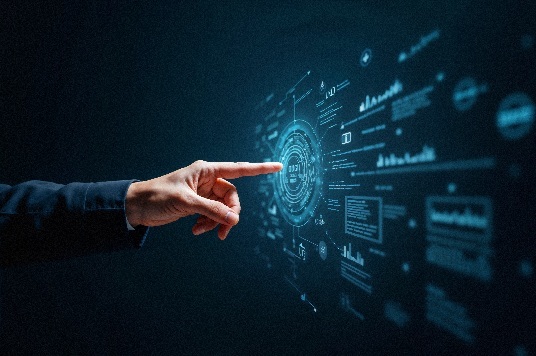Healthcare's digital transformation has accelerated dramatically in recent years, even before the Pandemic. While the coronavirus begins to settle down, the sweeping changes made to healthcare continue to shape the industry.
In an Accenture report released last year, the overwhelming majority of healthcare executives agreed their firm is accelerating digital transformation. If your firm doesn’t want to lag behind, it’s critical you stay on top of things.
This article will discuss some of the biggest trends in healthcare digitalization and how your organization can adapt to them. Let’s get started:
Telehealth
It’s not always possible to visit the doctor in person, especially in times of crisis or disadvantaged situations. To remedy this, many doctors have utilized the power of virtual reality to reach their patients across vast distances.
Dubbed “telehealthcare,” this new paradigm can bridge the gaps created by economic and situational hardships. For example, during the COVID-19 Pandemic, telehealth was used to protect doctors from being needlessly infected by their patients or vice versa.

Before the mass integration of telehealth, a sick person’s only path to treatment was to:
- Make an appointment
- Wait until a doctor is available
- Arrive at the doctor for evaluation
- Wait for results
- Revisit the doctor for treatment
Telehealth makes it possible to alleviate many of these pains or eliminate them altogether. Queues at the doctor transfer to virtual appointment software, and lengthy waits for treatment become video calls as it gives a more humanizing experience.
Also Read: Telehealth - Connecting Patients To Digital Health
Artificial Intelligence
Artificial intelligence has found its way into almost every facet of our life, and healthcare proving to be no exception. In fact, healthcare-related AI software will reach a valuation of over $34 billion in the next three years.
When you think about AI in healthcare, some sort of zany robot doctor might come to mind. While not impossible, most healthcare applications are much more mundane. In the coming years, you should expect to see AI assistance trickle into the medical field, assisting fields like customer service and data analytics.
While we may not have robo-surgeons (yet), present AI applications are making a big splash in healthcare. They’re automating countless tasks for healthcare workers and doing it in a fraction of the time.
.png?width=536&name=healthcare%20digital%20transformation%20(1).png)
Artificial intelligence has incredible potential in healthcare analytics. It’s being used to analyze imagery, reduce medical errors, and manage health records. Its powerful and restless repetition greatly helps to dive deeper into patient data and even save untold numbers of lives by reducing misdiagnoses.
It also shines in the fields of pharmaceutical development. Many recent innovations in drugs, vaccines, and other medicines credit AI as a contributor to their development. Besides analyzing data, AI can actually perform mundane research tasks by itself, in addition to automating other processes or offering Robotic Process Automation.
There’s also the influence that AI has over the logistics of getting medical supplies to the right place at the right time. As explained in this complete guide to eCommerce automation, everything from inventory management to order processing can be handled automatically. These tools are just as valuable in a healthcare context.
AI’s potential to “automate the boring stuff” means a vast reduction in research costs and more time spent making breakthroughs.
Also Read: Reshaping Healthcare With Big Data Analytics
Virtual Reality
To industry veterans, the idea of introducing virtual reality headsets into the medical field sounds strange. Humorous images of doctors wandering around their practice in bulky headsets come to mind, perhaps performing surgeries with their guidance.
While that’s not exactly out of the question, the potential for VR technology to catalyze changes in the healthcare industry is serious. VR applications offer numerous opportunities for professionals to educate, operate, and innovate.
.png?width=536&name=healthcare%20digital%20transformation%20(2).png)
We find one example in the University of Connecticut, who’s developed “PrecisionOS” in order to enhance the training of their surgeons. They’ve found that surgical residents using VR absorbed information a whopping 570% faster than the traditional route.
A few other clinics are working to take VR even farther by taking their practice into the metaverse. Therapy startup XR health is using the metaverse platform “rewire the circuitry that can cause crippling anxiety” in a virtual reality environment.
Internet of Things
Traditionally, medicine has always been appointment-based, where patients visit doctors and receive treatment then and there. Only during the advent of IoT technology did the possibilities of ongoing evaluation come into being.
Not only are these technologies convenient, but they are enormously effective. Better data make better treatment, and better treatment means better patient outcomes. Imagine being informed of your appointments, treatments, and health data from your smartwatch or email inbox. For those exploring healthcare in Costa Rica for tourists, these advancements ensure a seamless, personalized experience even while traveling.
Instead of staying in a hospital for extensive (and expensive) monitoring, patients return home with sensors capable of automating the process. Since IoT can move patient monitoring out of treatment centers, it also leads to reduced costs and stress upon health infrastructure.
.png?width=536&name=healthcare%20digital%20transformation%20(3).png)
Even when still in the hospital, IoT can enhance treatment. Advanced tracking technology can monitor medical equipment, infection, and patient behavior, lessening the burden of medical staff significantly. Many roles burdening medical professionals will be moved to IT support.
Consumer Wearable Devices
Over the last several years, Apple Watches and Fitbits have begun to appear in the arms of everyday consumers the world over. Rather than being purely recreational, these devices offer valuable healthcare functions to consumers.
The most common utilization of wearable devices concerns fitness tracking. Users can use their devices to track steps, miles walked, heart rate, and more. While fitness tracking is an enormous healthcare benefit by itself, the features of wearables go far beyond that.
.png?width=536&name=healthcare%20digital%20transformation%20(4).png)
For example, a patient with heart issues can monitor the minute details of their cardiovascular data. Then, if they have a crisis event, their smartwatch can blare an alarm, warning them of their life-threatening condition.
With its fall detection feature, an Apple Watch can replace the monitoring devices of those in very frequent isolation. An elderly person or solo adventure may one day owe their life to their smartwatch because it summoned emergency services when they could not. These sorts of technologies play into the larger IoT development in the healthcare industry.
Conclusion
While healthcare’s digital transformation has accelerated leaps and bounds already, it’s only just begun. As technology continues to develop at breakneck speed, we shouldn’t be surprised to see paradigm shifts even over a short period of time.
While the tech industry does its magic, it's the job of healthcare professionals to best integrate new technologies into their practice. This article discussed several new waves of innovation to give you an edge in this pursuit.
Submitted By: Samuel Szuchan is the founder of SamSzu.com, where entrepreneurs are learning to scale their businesses like never before. His experience in the ecommerce industry derives from his previous ventures and his current entrepreneurial pursuits. When he’s not teaching online business to others, he can be found playing the amateur food critic around town.






















